Turning probiotic bacteria into an effective microbial management tool for shrimp aquaculture
Among the strategies to obtain effective shrimp aquaculture methods, the application of probiotic bacteria has become a worldwide practice. First developed in the 1990s by Professor David Moriarty together with specialists from INVE Aquaculture, the concept of using probiotics is now backed by plenty of evidence that – when applied properly – it is an effective strategy for modern shrimp aquaculture. INVE Aquaculture continues to develop its probiotics solutions, such as the well-known Sanolife® range, into stable, easy-to-use, and cost-effective solutions with the highest number of active good bacteria per USD invested.
Clear and proven benefits
The benefits of probiotics have been elaborately observed and reported by scientists, industry experts and farm managers alike. The potential to actively modulate the animal’s gut microbiota and boost their immune response are qualities that turn probiotics into an essential part of aquaculture’s toolkit for microbial management. Probiotics also improve water quality conditions, reduce organic waste in the ponds, and optimize the shrimp’s feed utilization through the production of digestive enzymes (Hoseinifar et al., 2018, Jamal et al., 2019, Soltani et al., 2019). Finally, objective data show that probiotics contribute to improved growth and survival.
 Figure 1. Structure of bacterial spore, from Tehri et al., 2018.
Figure 1. Structure of bacterial spore, from Tehri et al., 2018.
Identifying the most suitable species and strains
Many bacterial species have been investigated as potential probiotics. But commercially available products today mainly contain strains of the taxonomic orders Bacillales and Lactobacillales.
Within these orders, most aquaculture probiotics are found in the Bacillaceae and Lactobacillaceae families. The latter are classified as Lactic Acid Bacteria (LAB), named after their metabolic end product. They are traditionally used in food fermentation and became known for their health benefits since the beginning of the 20th century. Despite their numerous gut health benefits, Lactobacillus bacteria present significant challenges in terms of viability when used in food/feed matrices. The reason is that they are most often applied as active or freeze-dried live cells. Under challenging field conditions such as pH and temperature variations, adding live probiotics to the feed may cause their inactivation (Ouwenhand, 2013). For optimal efficacy, the bacteria would benefit from extra protection, added for instance through encapsulation techniques. But this would evidently increase the cost and complexity of the production process.
 Figure 2. Illustrative scheme of closed air-containing chamber slide used to track spore germination process in a phase-contrast microscope.
Figure 2. Illustrative scheme of closed air-containing chamber slide used to track spore germination process in a phase-contrast microscope.
Moving towards optimal (cost-)effectiveness
An obvious alternative is to use probiotic species that are naturally protected. Bacilli, for instance, possess the natural capacity to form highly resistant, metabolically dormant structures that are called spores. If looked at the structure of such a bacterial endospore, its core contains a condensed and inactive chromosome. This is surrounded by a peptidoglycan cortex, and one or more layers of protein material, known as the spore coat (Fig. 1 from Tehri et al., 2018) (Cutting, 2010).
The interesting thing about this spore coat is that it protects the organism against harsh conditions, such as UV radiation, free radical and enzyme activity, and temperatures up to 80-85°C (Nicholson et al., 2000). The intrinsic capability to form a protective spore coat makes Bacillus a relatively stable bacterium (Ouwenhand, 2013). Because they can survive longer under the influence of environmental stressors, endospore-forming bacteria show better viability than lactic acid bacteria during production and storage, and thus a more stable shelf life in dry food matrices.
Germination: Getting dormant bacteria to become active
What’s important to understand, though, is that the bacterial cell inside the spore coat is in a dormant state. To resume its probiotic activity, it needs to go through an activation and germination process. Depending on the strain type, the bacteria will respond to environmental parameters, such as water activity, temperature or nutrient levels. Step by step, the spore coat layers become permeable. Eventually, they degrade completely, the bacterial cell leaves the membrane and resumes its metabolism. A good understanding and control of this process is crucial to effectively applying Bacillus probiotics to the shrimp pond water or in the feed.
Sanolife® Probiotics
What can probiotics manufacturers do to ensure the adequate revival of the Bacillus spores used in their products? As a leading example in the industry, INVE Aquaculture developed an assessment method for the spores used in its Sanolife® range. With real-time phase-contrast microscopic images, INVE documents the transition time from a non-germinated spore (phase bright) to a germinated spore (phase dark), and the consequent evolution into multiplying cells. Figure 2 illustrates the mounting of spores (i.e. the yellow circle) into a microscope chamber with growth media on a glass slide, monitoring the process.
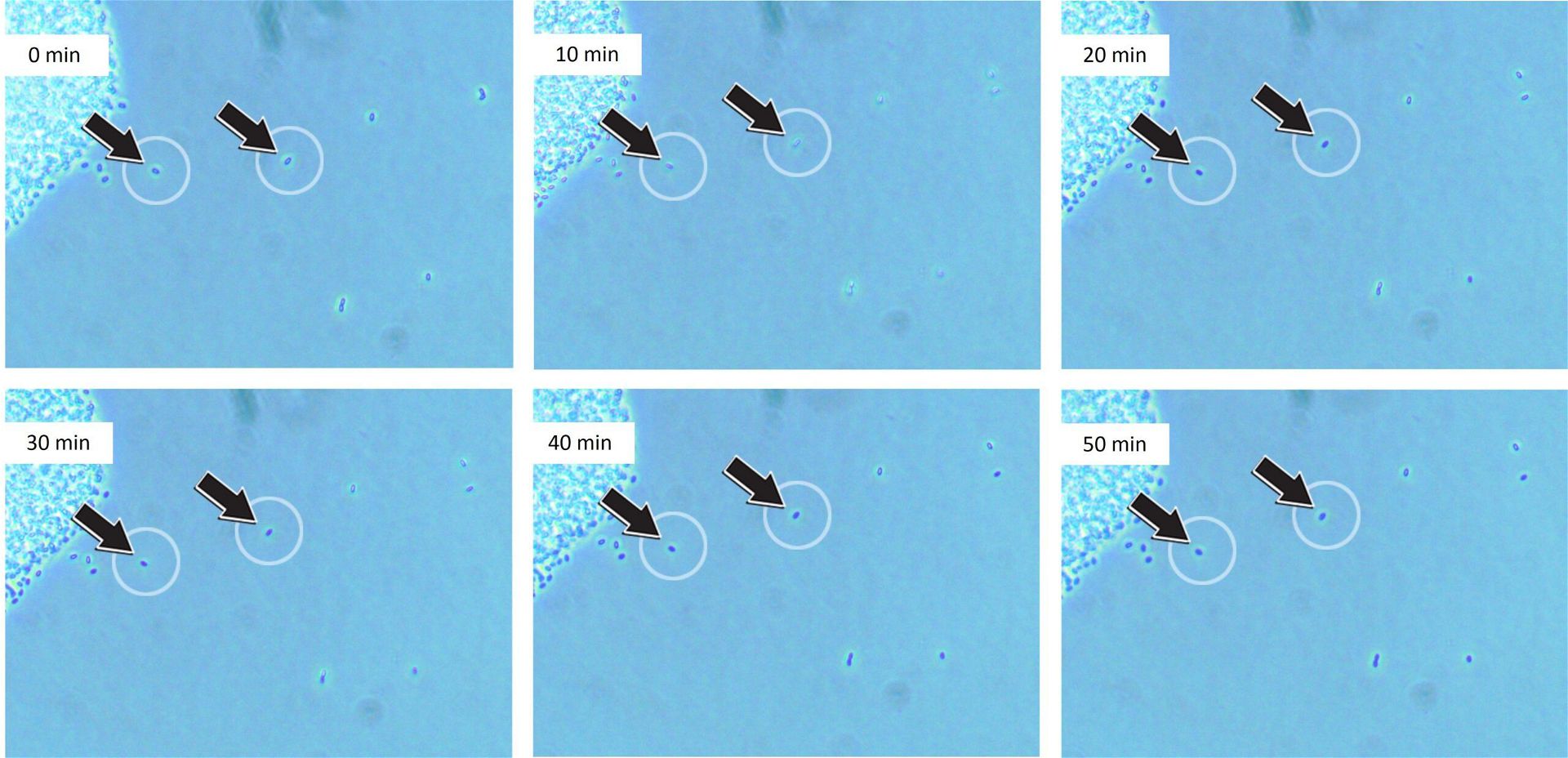 | 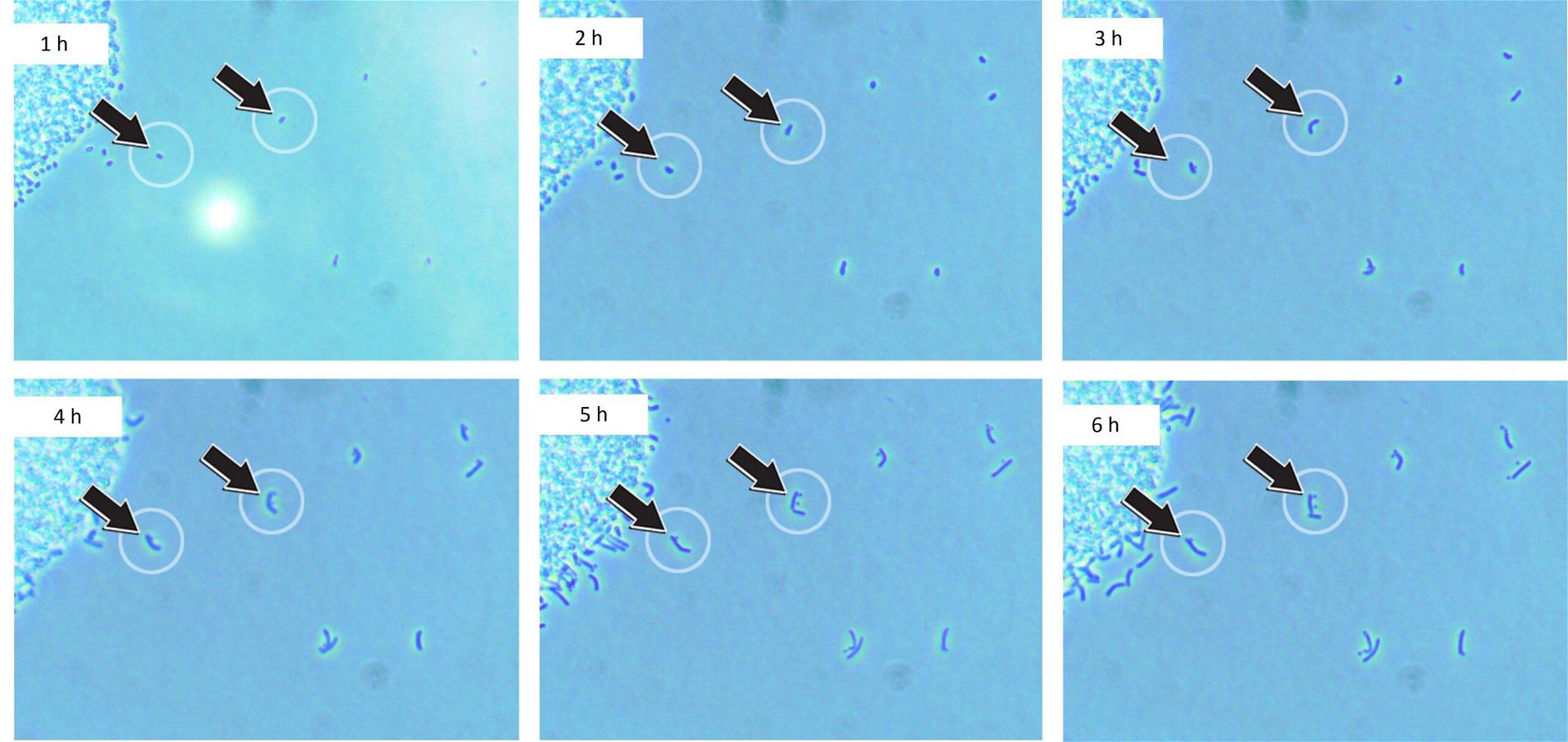 |
| Figure 3. (A) Sanolife® Spore germination process from 0 to 50 minutes in time-lapse recording and closed air-containing chamber (incubation 27-30°C). Black arrows indicate the ongoing process tracked in individual spores. (B) Sanolife® Spore germination process from 1 to 6 hours in time-lapse recording and closed air-containing chamber (incubation 27-30°C). Black arrows indicate the ongoing process tracked in individual spores. | |
Proven 96% germination
These microscopic analyses prove that spore germination of Sanolife® Probiotics occurs within 10 minutes after incubation when exposed to temperatures of 27-30°C. Within 1-2 hours, the spores grow into vegetative cells, and from 3 hours onward, cell replication begins (Fig. 3A, 3B). Arrows indicate individual spores demonstrating a transition from phase bright over phase dark to multiplying cells. The germination percentage reaches 96% in a little over 1 hour (Fig. 4).
Translated to shrimp farm practices, this means that from the moment Sanolife® Probiotics are applied to the pond water (or reach the shrimp gut when added to the feed), 96% of the spores will germinate in less than 2 hours. Under lower temperatures (<20°C), the spores take about 30 minutes to activate (Fig. 5), and around 3.5 hours to reach around 80% germination (Fig. 6). Hence, for low water temperature cultures (<20°C), it may be advisable to briefly activate the spores in warmer water before applying the probiotics.
 Figure 4. Percentage (%) germination of Sanolife® spores under 27-30°C in time-lapse Figure 4. Percentage (%) germination of Sanolife® spores under 27-30°C in time-lapse | 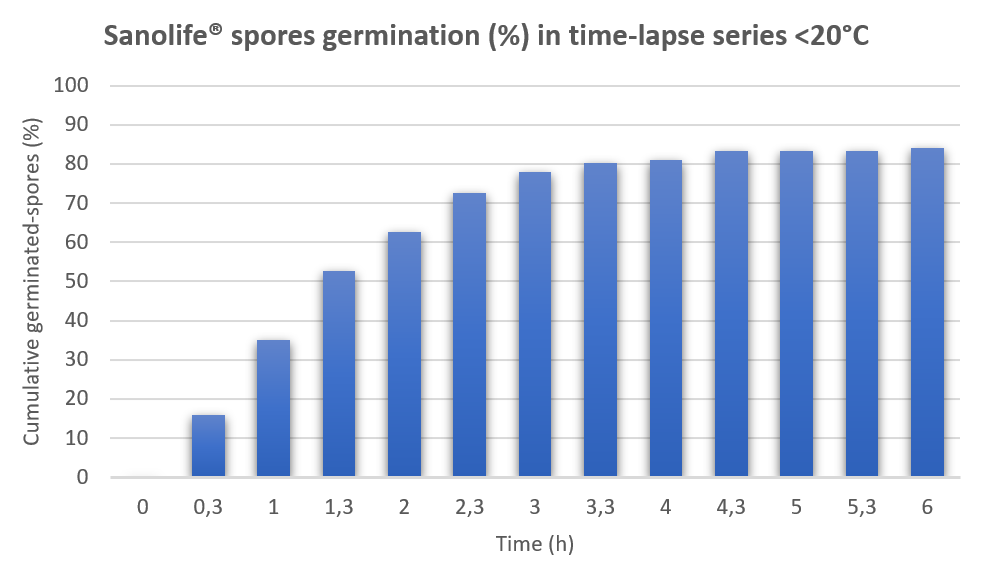 Figure 6. Percentage (%) germination of Sanolife® spores under <20°C in time-lapse series Figure 6. Percentage (%) germination of Sanolife® spores under <20°C in time-lapse series |
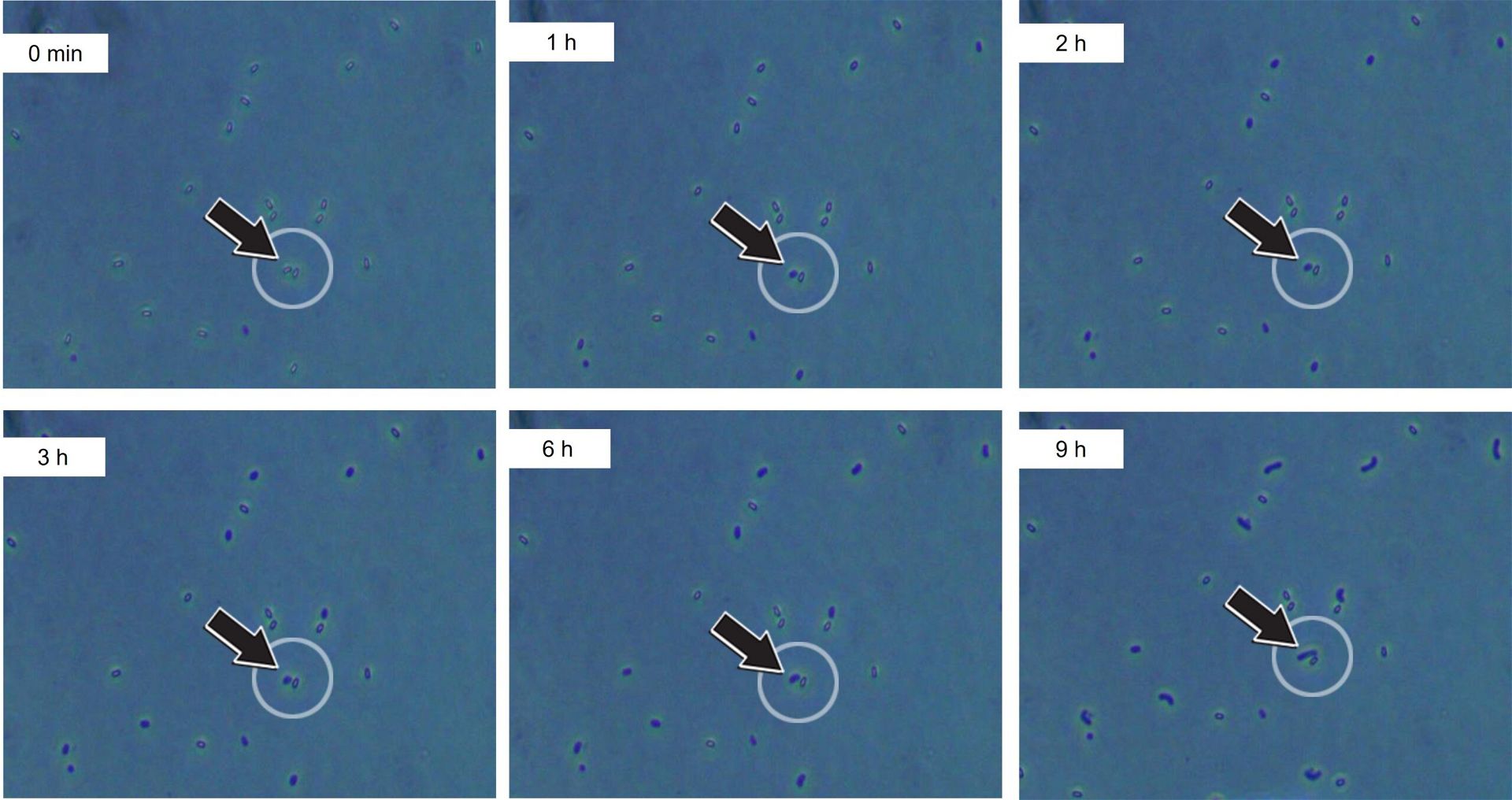 Figure 5. Sanolife® Spore germination process from 0 to 9 hours in time-lapse recording and closed air-containing chamber (incubation <20°C). Black arrows indicate the ongoing process tracked in individual spores. Figure 5. Sanolife® Spore germination process from 0 to 9 hours in time-lapse recording and closed air-containing chamber (incubation <20°C). Black arrows indicate the ongoing process tracked in individual spores. | |
Comparative studies
Besides water quality parameters, the type and origin of the bacterial strains are essential to choosing a probiotic product. This is clearly illustrated by a microscopic comparison between INVE Sanolife® Probiotics and an alternative Bacillus-based product. After 4 hours of incubation under the same conditions, Sanolife® spores have germinated and grown into vegetative cells, while most cells of the alternative Bacillus-based product are still in non-germinated spore form (Fig. 7).
INVE Aquaculture will continue its efforts to acquire in-depth knowledge of probiotic mechanisms, to deliver products with documented qualities and to provide farmers with hands-on information to obtain optimal results.
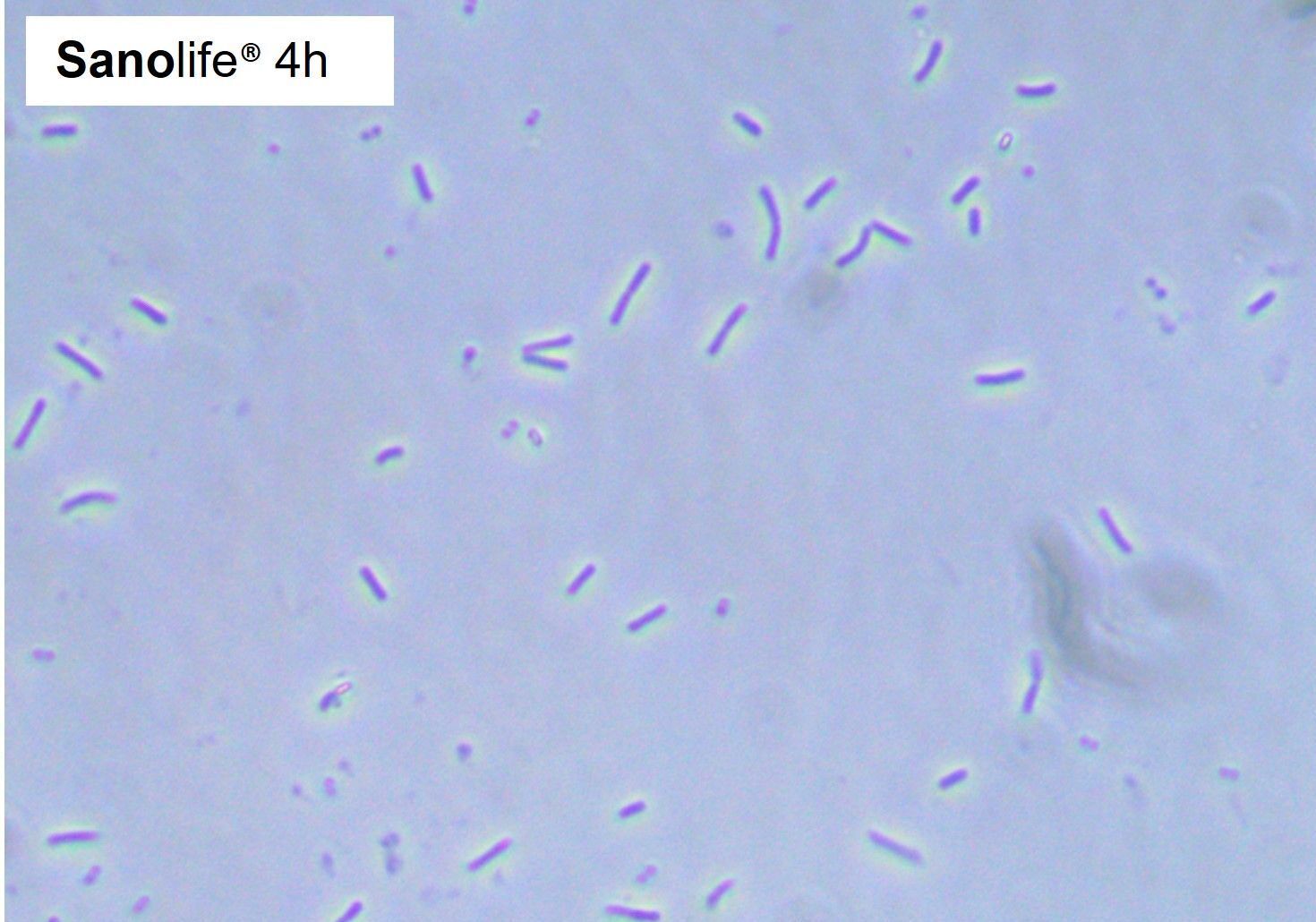 | 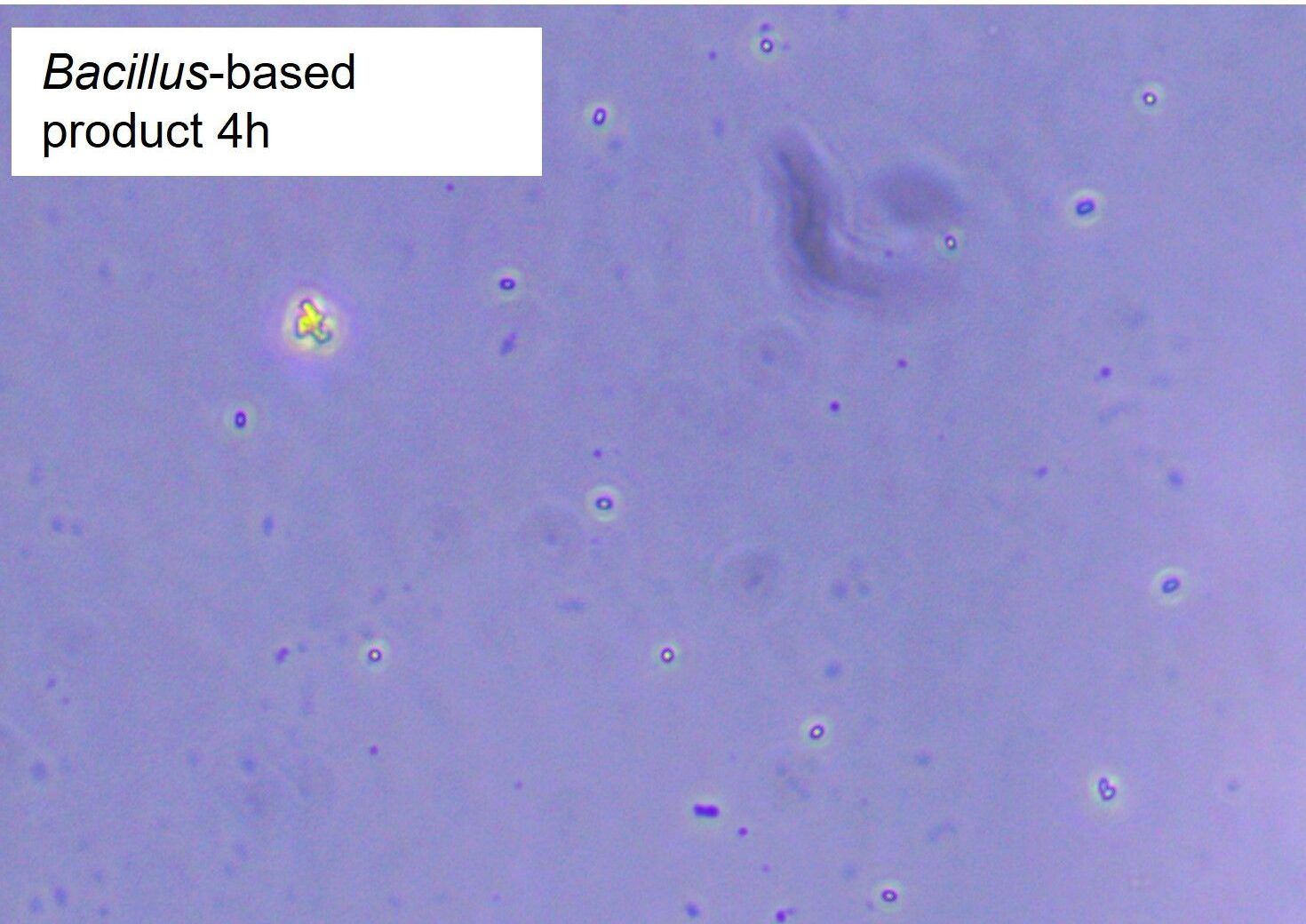 |
| Figure 7. Comparison of germination process between Sanolife® spores and an alternative Bacillus-based product in 4 hours time. | |
Authors: Barbara Hostins, Pranisa Suthianthong, Laurent Marien, Peter De Schryver – INVE Aquaculture
This article is featured on the following websites: